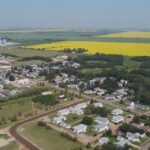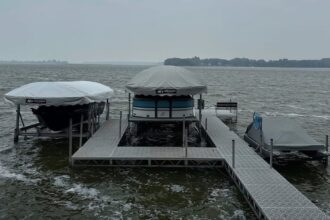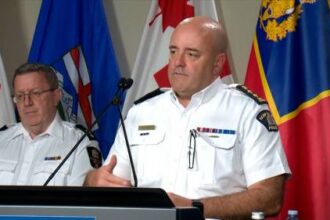The acrid smell of smoke hangs heavy over northern Saskatchewan as massive wildfires continue their relentless advance, forcing approximately 15,000 residents to flee their homes in what officials are now calling the province’s worst fire emergency in decades. Emergency crews are working around the clock as flames threaten multiple communities and critical infrastructure across the region.
“We’re dealing with unprecedented conditions,” Premier Scott Moe stated during an emergency press conference yesterday from Regina. “The combination of extremely dry conditions, high temperatures, and shifting winds has created the perfect storm for these fires to spread rapidly and unpredictably.”
The largest evacuation order affects the communities surrounding La Ronge, where more than 7,000 residents were given just hours to gather essential belongings before departing via emergency convoys. Temporary shelters have been established in Saskatoon and Prince Albert, though officials acknowledge the facilities are quickly reaching capacity.
According to the Saskatchewan Public Safety Agency, more than 230 active wildfires are currently burning across the province, with at least 35 classified as “out of control.” The total area consumed has surpassed 1.2 million hectares – nearly triple the five-year average for this time of year.
“This isn’t just about property damage,” explained Dr. Annette Guenther, climate scientist at the University of Saskatchewan. “We’re seeing ecological devastation that will take decades to recover, significant air quality issues affecting neighboring provinces, and widespread disruption to both the economy and social fabric of these communities.”
Federal assistance has been mobilized, with Canadian Armed Forces personnel deployed to assist with firefighting efforts and evacuation operations. Four water bombers from Quebec and Ontario have also been diverted to the region, supplementing Saskatchewan’s strained resources.
The economic impact is mounting rapidly. Initial estimates suggest damages could exceed $2.3 billion when accounting for destroyed infrastructure, lost timber resources, business interruption, and emergency response costs. The province’s important mining operations in the north have been particularly hard hit, with three major sites suspending operations indefinitely.
Indigenous communities are facing especially severe challenges. Chief Robert Merasty of the Flying Dust First Nation described the situation as “heartbreaking” after nearly 90% of his community was forced to evacuate. “Our people have deep connections to these lands. When they burn, we lose not just homes but cultural sites, traditional hunting grounds, and places of immense spiritual significance.”
Health officials are also raising alarms about the secondary effects of the disaster. “We’re seeing a significant increase in respiratory complaints, even hundreds of kilometers from the actual fires,” noted Dr. Karen Leung, Medical Health Officer for the Saskatchewan Health Authority. “Vulnerable populations – especially the elderly, children, and those with pre-existing conditions – are at serious risk from prolonged smoke exposure.”
Climate experts point to this crisis as further evidence of shifting weather patterns across the Canadian prairies. Environment Canada data shows the region has experienced a 40% decrease in spring rainfall compared to historical averages, while temperatures have consistently registered 2-3 degrees above normal throughout May.
As containment efforts continue, authorities are already considering the long-term implications of what may become a new normal for the province. “We need to fundamentally rethink our emergency preparedness, community planning, and resource allocation,” Premier Moe acknowledged. “The reality is that these extreme fire seasons are becoming more frequent, not less.”
For evacuees like Sarah Whitecalf, who fled her Buffalo Narrows home with just a suitcase and her family photos, the future remains uncertain. “I don’t know if we’ll have anything to go back to,” she said, her voice breaking. “The community I’ve known my entire life might just be gone.”
As Saskatchewan faces this unfolding catastrophe, a question emerges that extends far beyond the province’s borders: How will Canada’s rural and northern communities adapt to an era where such extreme climate events are no longer exceptional but increasingly expected?

























